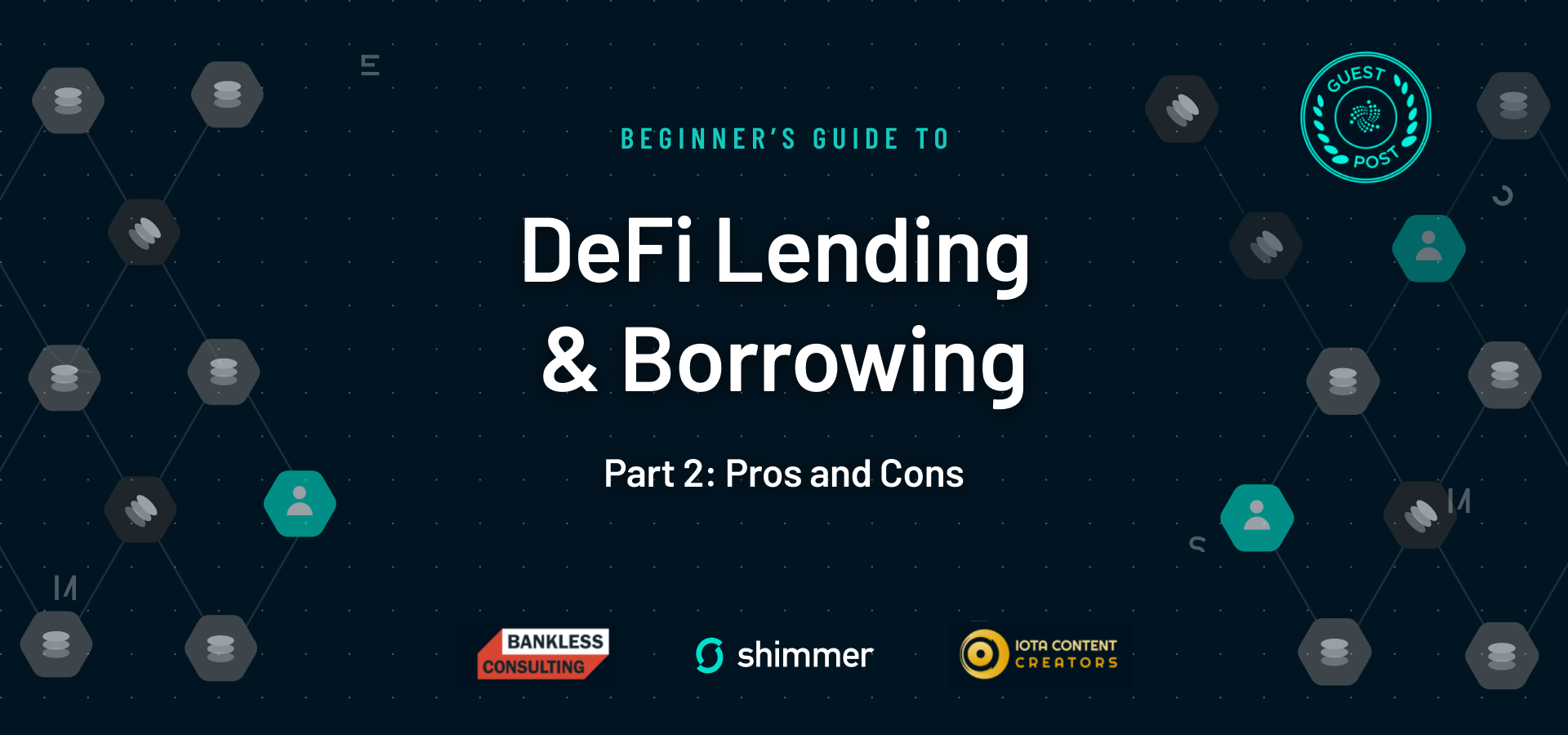Pros and Cons

TL;DR:
In the second part of our three-part guide to DeFi lending and borrowing, we look at the numerous benefits as well as drawbacks. On the positive side, DeFi platforms leverage transparent smart contracts to automate processes, eliminate intermediaries, ensure decentralization, and provide financial access for all. Disadvantages include vulnerability to hacks, variable interest rates susceptible to market volatility, fees in some cases, and the lack of regulatory oversight. Understanding these pros and cons is crucial for individuals considering participation in DeFi lending and borrowing.
Decentralized Finance (DeFi) lending and borrowing have gained significant traction in recent years, revolutionizing the traditional financial landscape. By leveraging blockchain technology and smart contracts, these platforms offer a host of benefits, such as automated processes, decentralization, access and inclusion, transparency, and programmability. However, as with any emerging technology, there are also several disadvantages to consider.
In Part 2 of our guide to DeFi borrowing and lending, we delve into the advantages and disadvantages, highlighting the transformative potential of this decentralized approach while acknowledging the risks and challenges that come with it.
This article was first published in the newsletter of the IOTA Content Creators DAO and is based on the third session of the IOTA x Bankless DeFi education series. The session was presented on 22 September 2022 by Joe King and the summary, organization, and additional detail in the article are by DigitalSoul.x
Benefits of DeFi lending and borrowing
● Automated Processes: DeFi lending platforms use smart contracts to automate the lending and borrowing process. These contracts handle the transfer of assets, calculate interest, and manage collateral. This automation eliminates the need for intermediaries like banks, reducing costs and enabling permissionless access to financial services.
● Decentralization: Traditional financial markets rely on centralized intermediaries such as banks, lending institutions, and clearinghouses. DeFi lending, on the other hand, operates in a decentralized manner, leveraging blockchain technology and smart contracts. It allows direct peer-to-peer lending and borrowing without the need for intermediaries.
● Access and Inclusion: DeFi lending platforms are open at all hours and are permissionless. Anyone with an internet connection and a digital wallet can participate, regardless of their location or background. This provides greater financial inclusion and access to financial services for individuals who may not have access to traditional banking.
● Transparency: DeFi lending platforms are built on public blockchains, making the transactions and smart contract code transparent and auditable. This level of transparency provides users with visibility into the platform’s operations and enhances trust in the ecosystem.
● Programmability: Smart contracts enable programmability in DeFi lending. Users can create complex financial arrangements, automate interest calculations, and execute various actions based on predefined conditions. This flexibility allows for innovative financial products and services that can be customized to individual needs.
Disadvantages of DeFi lending and borrowing

● Hacks: DeFi protocols have their share of risks, and one of the most significant is the risk of hacking because it involves code. Lending and borrowing protocols have been frequent targets of hacks, leading to the loss of funds. To compensate for the risks, DeFi protocols tend to pay higher interest rates.
● Over-Collateralization: Protocols can tend to be over-collateralized, making it difficult for people without substantial capital to access loans. Small business owners are typically strapped for cash and it wouldn’t make sense for them to enter into an over-collateralized loan. Similarly, a person in the market to buy a home wouldn’t want to offer twice the value of the home as collateral. There are just a couple of cases in which DeFi borrowing doesn’t make sense with the products currently available.
● Variable Rates: Borrowing rates are usually variable and subject to change based on an algorithm that depends on the utilization of the pool. Due to the volatility of crypto, rates can change quickly. And, since the market is always open, you could get liquidated overnight if the market is particularly volatile.
● Fees: Fees are still involved with many of these protocols, so we can’t escape this feature of the traditional lending market. Most DeFi protocols also charge a stability fee, which is similar to a loan origination fee in traditional finance. Unfortunately, some of the relics of TradFi have also been incorporated into DeFi.
● Regulation: DeFi operates in a relatively unregulated space, which can provide more freedom but also presents challenges in terms of investor protection and regulatory compliance.
In conclusion, decentralized finance (DeFi) lending and borrowing platforms offer a range of advantages such as automated processes, decentralization, accessibility, transparency, and programmability. However, it is essential to be aware of the associated risks, including the potential for hacks, over-collateralization, variable interest rates, fees, and the absence of regulatory protection. As the DeFi ecosystem continues to evolve, users must weigh the benefits and drawbacks carefully and make informed decisions when participating in decentralized lending and borrowing.
In the next part of this guide, we explore the role of oracles and platforms in DeFi lending and borrowing.
Introduction to DeFi Lending and Borrowing
Part 1: The Essentials
Part 2: DeFi Lending and Borrowing Pros and Cons
Part 3: Oracles and Platforms
Also in this series
Beginner’s Guide to Crypto Wallets


